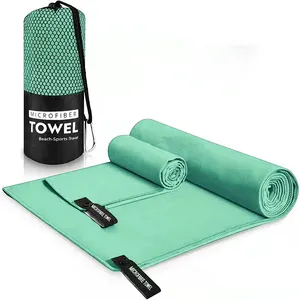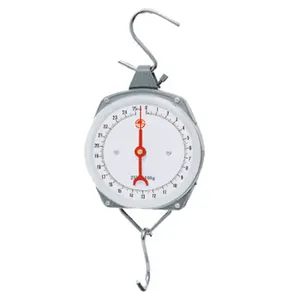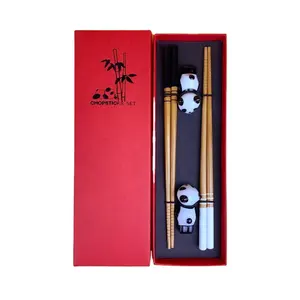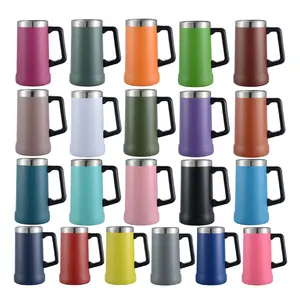Popular in your industry



























































Related Searches:

























 Ready to Ship
Ready to Ship






















































 Ready to Ship
Ready to Ship



















































Top categories
About lavender centerpieces
Introduction
Envision an event that captivates the eyes and enchants the senses with a delightful aroma. This is the charm that lavender centerpieces can bring to your occasion. Lavender, renowned for its vibrant purple blooms and soothing fragrance, symbolizes beauty, grace, and sophistication. This comprehensive guide will navigate you through the enchanting world of lavender, exploring its allure, the different varieties, and how to create and maintain your own lavender centerpiece. We will also delve into how to incorporate these centerpieces into various event themes, transforming your event into a memorable experience.
The Magic of Lavender: Understanding Its Appeal
Lavender, celebrated for its beautiful appearance and pleasant smell, carries various meanings and symbols recognized for centuries. Its vibrant and aromatic presence inspires a sense of vitality and energy. Its delicate purple flowers symbolize elegance and refinement. The lavender plant is thought to enhance mental clarity and focus, with its aroma helping to clear mental fog and improve concentration. Historically associated with royalty and nobility, its regal purple color and exquisite fragrance have long been linked to notions of luxury, elegance, and sophistication.
Choosing the Right Lavender: An Overview of Varieties
Choosing the right lavender variety for your centerpiece is crucial. English Lavender, known for its fragrant purple spikes, is a classic choice. Spanish Lavender, with its silvery leaves and larger flowers, thrives in warm climates. French Lavenders, suited to mild climates, have toothed leaves and fluffier flowers. Each variety has its own unique aroma and aesthetic appeal, making them ideal for different types of centerpieces. Remember, the right lavender variety can transform your centerpiece into a captivating display of color and fragrance.
English Lavender
English lavender, scientifically known as Lavandula angustifolia, is a beloved evergreen perennial shrub native to Mediterranean areas. It grows up to 2 feet tall and 3 feet wide, blooming in the summer with aromatic leaves, flowers, and dry seed heads. This plant is the source of the true oil of lavender and its flowers can be dried and used in potpourri. It requires well-drained soil, preferably dry, and full sun. It doesn't thrive in heavy clays and prefers neutral to alkaline soils. Despite its susceptibility to leaf spot and root rot, it's a versatile plant suited for a wide variety of gardens.
French Lavender
French Lavender, or Lavandula dentata, is a beautiful and aromatic flowering shrub, covered with purple flowers through summer. Its scent is more delicate than other species, making it an excellent choice for low informal hedging, borders, and formal gardens. This evergreen shrub has a dense, mounded form, lending a fine and delicate texture to the landscape. It grows to about 32 inches tall, with a spread of 4 feet, and is highly tolerant of urban pollution. It thrives in full sunlight, prefers dry to average moisture levels, and is considered drought-tolerant. French Lavender is also well-suited for use in outdoor pots and containers.
Spanish Lavender
Spanish lavender, originating from warm and dry areas of Spain, Portugal, and North Africa, is a vibrant addition to any centerpiece. It grows as a rounded shrub, with intense purple bracts that make it the most colorful of garden lavenders. This species is unique, producing large purple bracts that grow out of the top of its flower heads. Spanish lavender thrives in sunny locations, well-drained soils, and with low to moderate amounts of moisture. It's a very colorful plant for use in mixed perennial gardens, mass groupings, and containers, making it an excellent choice for your centerpiece.
Creating Your Lavender Centerpiece: A Step-by-Step Guide
Creating a lavender centerpiece is simple and requires no prior experience. Start by cutting floral foam to fit your vase and soaking it until fully saturated. Begin with your focal flower, in this case, lavender ocean song roses, and then add smaller flowers, fillers, and greenery. Add white ranunculus gently due to their hollow stems. Intersperse baby blue and silver dollar eucalyptus stems, ensuring they are longer and flow out farther than the roses. Finally, add blue veronica stems and fill any gaps with additional flowers or greenery.
Selecting the Perfect Vase
Selecting the perfect vase for your lavender centerpiece is crucial. Consider the location and material of your vase. Table vases, typically smaller and lighter, are ideal for a few lavender stems. For larger arrangements, floor vases, which are bottom-heavy, can be a focal point in a spacious room. Wall vases, often made of glass, add depth and personality to your space. The material of the vase also plays a role. Glass and crystal vases allow light to travel through, enhancing the beauty of the lavender. Metal vases offer a contemporary, durable option, while wooden vases provide a natural look.
Arranging Your Lavender
Lavender makes a beautifully scented addition to arrangements. For centerpieces, lavender can be used fresh or dried. The secret to success is harvesting flowers at the right stage. Lavender bouquets bring the beauty and fragrance of the garden indoors. When arranging lavender, ensure to remove all leaves that fall below the water line. An easy way to create a dried lavender centerpiece is to arrange stems in a vase without water. Once dried, arrange lavender bunches with other dried garden flowers or create a large lavender display.
Adding Complementary Elements
Lavender centerpieces can be beautifully complemented by other elements. For instance, you can place clear vases on the table with lavender stems inside or set a dough bowl on the table with a bundle of dried lavender tied with a bow. Lavender also works great with other fresh flowers. Another simple lavender centerpiece is the cosmos and lavender bouquet. This bouquet uses a vintage ironstone pitcher, adding gorgeous cosmos flowers with their long wildflower-looking stems. After arranging all the flowers, tuck some lavender stems to finish the look.
Maintaining Your Lavender Centerpiece
To ensure your fresh cut lavender lasts as long as possible, remember that you can hang your lavender to dry and it will provide you with memories for up to ten years. Fresh cut lavender is versatile, with a delightful scent and longevity. If you can’t use it when you get it, you can easily store it for the future. Fresh lavender is available for harvest starting early June into the first week of July and again in September for our 2nd bloom.
Watering and Sunlight Requirements
Lavender is easy to maintain and rewards you with a beautiful display. It thrives in well-drained soil and full sun. In arid climates, lavender grows well as a perennial, but in humid climates, it's often grown as an annual. Overwatering can be detrimental to lavender. Large-scale growers typically irrigate twice a year, promoting healthy root growth. Short and frequent watering cycles can lead to unhealthy roots that may rot. Lavender loves blazing hot sun and dry soil. If your lavender doesn’t thrive, it’s most likely due to overwatering, too much shade, and high humidity levels.
Preserving and Replacing Your Lavender
Lavender is a low-maintenance plant that requires minimal care. However, it's essential to prune it annually to prevent it from becoming woody and sprawling. Overwatering, too much shade, and high humidity levels can harm your lavender. If your lavender centerpiece doesn't thrive, it's likely due to these factors. In harsh winters or heavy and dense soil conditions, consider growing lavender in containers. They flourish with at least 8 hours of direct sunlight a day and high-quality potting mix with good drainage. During winter, bring your container plants indoors and place them in a sunny window.
Incorporating Lavender Centerpieces into Different Event Themes
Lavender centerpieces can transform a wedding into a fairy tale. Arrange dried lavender stalks in copper vases or votives for a mix of modern and sweet on each table. They can be arranged alongside lanterns or sweet-smelling candles. For a more lavish look, make bouquet arrangements with lavender, white peonies, pink sweetheart roses, ranunculus, and white roses. Lavender bouquets as centerpieces can add a stunning look to your tablescape. There are many ways to incorporate lavender and its sweet scent into your wedding, making it an unforgettable event.
Weddings
Lavender is a versatile and appealing choice for wedding decor. Its longevity out of water and ability to retain color, scent, and shape for months when dried make it a cost-effective option. Lavender can be incorporated into various aspects of a wedding, from sprucing up the invitation suite to adding charm to the bouquet. It can be used to create boutonnieres, style engagement rings, decorate aisles, and even as a ceremony exit toss. Lavender-infused cocktails, escort cards, centerpieces, place settings, and bridesmaid bouquets are other creative uses. Consider a lavender farm venue for an immersive experience.
Corporate Events
Lavender centerpieces can introduce an enticing combination of simplicity and beauty that exudes a total aesthetic ambiance to the whole event surrounding. They are not only delightful to use at wedding receptions but can also brighten up your corporate event. Scheduling the flowers to arrive 2 days before your event allows them to hydrate and open in time, ensuring the best flower performance. The shade may vary due to weather conditions and different display settings, but the images are from the actual flowers.
Private Parties
Hosting private parties can be made more memorable with a simple lavender centerpiece. This centerpiece can be created with potted lavender plants, complemented by smaller flowering plants in varying shades of purple. To add depth, use rustic candlesticks and votive candles wrapped in burlap. The centerpiece not only enhances the aesthetic appeal of the party but also serves as a token of appreciation for guests, as they can take home the smaller potted plants. This idea is perfect for those who want to keep things simple yet elegant.
Conclusion
Lavender centerpieces are more than just a visual treat; they are a sensory experience that can transform any event into a memorable occasion. Understanding the appeal of lavender, choosing the right variety, and knowing how to create and maintain your centerpiece are key to achieving this transformation. Whether it's a wedding, a corporate event, or a private party, lavender centerpieces can add a touch of elegance and sophistication. Remember, the magic of lavender lies not just in its beauty, but also in its ability to evoke emotions and create lasting memories. So, why not embrace the enchanting world of lavender and let it transform your next event?





































































